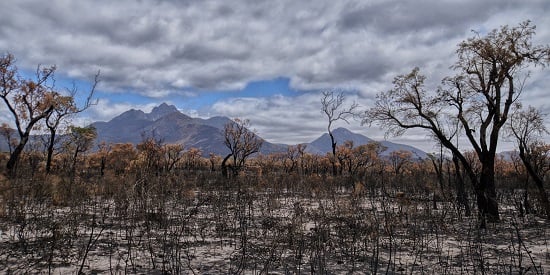Income support needed for individual workers hit hardest by bushfires
Media release
Government spending on communities ravaged by bushfires needs to change and go directly to the incomes of those that new evidence confirms are hit hardest; agriculture, food services, accommodation, part-time and female workers, low-income employees, and small business owners.
Deakin's Director of the Centre for Energy, the Environment and Natural Disasters, Professor Mehmet Ulubasoglu, today made the strong recommendation as he released reports with the Bushfire and Natural Hazards Cooperative Research Centre (BNHCRC) on the fatal 2009 Black Saturday Bushfire in Victoria, and the 2009 Toodyay Bushfire in Western Australia.
Both policy guides provide fresh and insightful advice to governments across Australia with the next 'bushfire season' imminent.
Speaking at the Economics in Disaster Recovery online seminar co-hosted by Deakin and the BNHCRC, Professor Ulubasoglu urged policy advisors in attendance from several states and territories, to use future recovery programs to lift the broken income trajectories of people with less job and income resilience to natural disasters so they can financially recover.
Other policy papers released - which unearthed similar disparities and potential solutions - related to the fatal 2010-11 Queensland Flood, and the fatal 2013 Tropical Cyclone Oswald, which hovered for seven days over Queensland and NSW.
"The poor become poorer following disasters," Professor Ulubasoglu said. "And there may be lessons here governments can apply to help those suffering financially from the bushfires across Australia in late 2019 and early 2020.
"Governments and any organisation that wants to help our fellow Australians need to look beyond the aggregate impacts commonly focused on, to understand a person's socioeconomic vulnerability to disasters.
"These bushfire-related findings show socioeconomic vulnerabilities are concentrated in certain demographic groups and sectors of the economy. This is significant and very useful if we apply it.
"In addition, both poor and female residents exhibit lower economic resilience to disasters, in that they may not be fully able to return to their pre-disaster income trajectory in the medium-term. This highlights the potential for disasters to widen income inequality over time."
Professor Ulubasoglu believes focusing on individuals' income stream enables policy advisers to explore how disaster-induced economic shocks can be transmitted to the labour force via income-earning channels, and offers a greater understanding of how the indirect costs of disaster likes bushfires, cyclones and floods are borne by different segments of the working population.
"By defining economic resilience to be an individual's ability to return to their pre-disaster income levels, this research helps policymakers better understand the socioeconomics of disasters caused by natural hazards and formulate public policies in a sustainable way that better distributes scarce budgets and resources towards vulnerable socioeconomic groups and employing industries that are more sensitive to disasters," Professor Ulubasoglu said.
Victorian Council of Social Service (VCOSS) CEO Emma King, said: "More than three million Australians live below the poverty line. When disasters strike, it's these people who are hit the hardest. More direct support so people doing it tough can weather trauma, recover well and not fall even further behind, is absolutely critical."
Bushfire and Natural Hazards CRC Research Director Dr John Bates explained that access to trusted and reliable information is vital to help communities recover from bushfires, floods and cyclones.
"Thanks to this research, we can now better understand the impacts on the incomes of individuals and small businesses whose lives and occupations have been affected by natural hazards. What it's telling us is that not everyone is affected in the same way - there are some groups who are much more affected than others," Dr Bates said.
Professor Ulubasoglu welcomed the Australian Government's recent announcement of investing $88.1 million over the next 10 years to support the transition of the BNHCRC to a new centre for natural hazard resilience and disaster risk reduction.
Findings released today in the four policy papers, shows specific annual income drops in the short for individuals, and in some cases in the medium term.
The policy papers for all four natural disasters can be found here: https://www.bnhcrc.com.au/events/2020-economics
Share this story

